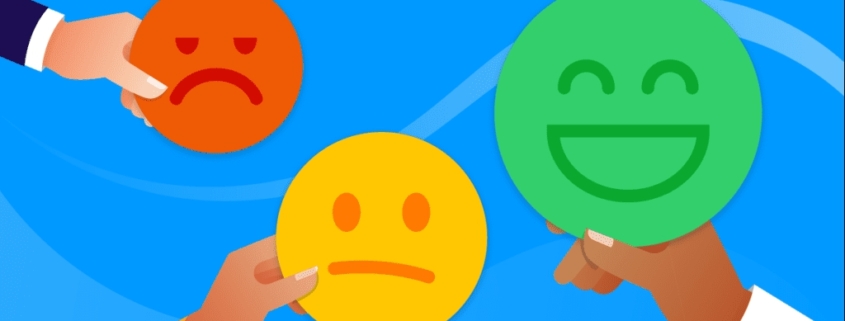Understanding Your Best and Your Worst Customers
As Covid-19 declined, a European multichannel retailer observed a decline in its online revenues, which caused alarm. But then they looked at the data a different way, focusing on transactions by individual customers. When they sliced the data in this manner, they realised that their customer base was actually healthy, but that their channel behaviour had shifted: Online purchasing, which had become unnaturally accelerated during the pandemic, was now returning to a more normal pattern of online and offline purchasing.
A European multi-brand underwear retailer was a major reseller of La Perla, a premium Italian lingerie brand. A new merchandising leader undertook a review of brand profitability and saw that the company was actually losing money on its La Perla sales. The brand had relatively low margins, a high return rate, and required expensive photography costs to capture its products’ elegance online. The company debated whether it was worth carrying a brand that consistently created losses. However, when they looked at La Perla through the lens of the customer, they reached a completely different conclusion. La Perla was often the first brand purchased by their most valuable customers, who went on to purchase a wide variety of more profitable products. Instead of cutting ties with La Perla due to its lack of profits, the retailer ended up expanding their range of La Perla offerings — and this became a critical driver of its growth.
What do these two examples have in common? Companies often look at their business by focusing on geographic regions, specific brands or products, or by sales channel. This makes sense, because this data is always at hand, and organisations are often structured around geography or channels. But by looking at data and business problems from a frame of reference in which the customer is the atomic unit for analysing revenue and profitability, these firms were able to gain a new perspective on the problem they were facing, either properly diagnosing the problem or stopping themselves from making a bad decision.
As you analyse your firm’s revenues and profits, or as you make plans for the future, what’s your unit of analysis?
At too many firms, analysing the data of individual customers gets short shrift. Management reporting systems make it easier to focus on other things, and the organisational structure can make other metrics a priority. (If you have a person in charge of online sales, it feels natural to judge his or her performance by channel metrics.) This lack of focus on individual customer data is often a mistake. Revenues are generated by customers pulling out their wallets and paying for your products and services. Revenue is the sum of the value of all the customer transactions that occurred in a given time period.
Many firms recognise the need to think differently about using customer data, but they do not know where to start. They are often trapped in an old-fashioned view of their business, structured around products or channels. How do you approach the task of getting your people to shift their perspective and start thinking about your firm’s performance using the customer as the atomic unit of revenue and profitability?
We have found that performing a customer-base audit is a fundamental catalyst for change.
What is a Customer-Base Audit?
A customer-base audit is a systematic review of the buying behaviour of a firm’s customers using data captured by its transaction systems. The objective is to provide an understanding of how customers differ in their buying behaviour and how their buying behaviour evolves over time.
- We are not talking about “knowing the customer” through the lens of traditional market research. We are not interested in the demographic profile of our customers. We are not interested in their attitudes. We are interested in understanding their actual buying behaviour.
- It is an unashamedly descriptive and diagnostic exercise. It doesnot involve any forecasting models, AI/ML methods, or prescriptive advice. Rather, it lays the foundation to perform these kinds of tasks more effectively after the audit has been completed.
The starting point is a list of transactions for each customer (date, time, products purchased, total spend, etc.). This will reside somewhere in your company’s operational IT system.
Traditional reports will summarise performance by product. Think of an Excel worksheet where the rows correspond to individual products and the columns correspond to time (e.g., quarter).
Now, imagine an alternative summary table — again, think of an Excel worksheet — where the rows now correspond to individual customers and the columns correspond to time (e.g., quarter). The entries in the table report each customer’s total spend with the firm in that particular time period. Another table tells us how many transactions each customer made with the firm. (For most firms, these tables will contain lots of zeros.) If you’re lucky, you’ll also have an equivalent table that summarizes the profit associated with each customer in each period.
How do we approach the task of gaining insight from such a customer-level summary? As we reflect on the various questions that are asked when leaders seriously engage with the idea of understanding the performance and health of their business using the customer as the atomic unit of revenue and profitability, five broad themes appear, which we call the five lenses of a customer-base audit.
Who are our Best and Worst Customers?
If we reflect on a single vertical slice of the table, say the columns associated with last year, the following types of questions come to mind. How many customers did we have last year? How do these customers differ in terms of their value to the firm? For example, how many customers purchased from us just once last year? How many customers accounted for half of our revenue last year? Half of our profit? If we compare, say, the 10% most profitable customers to the 10% least profitable, what lies behind these differences? To what extent are they driven by differences in the number of transactions, the average value per transaction, and average margin per transaction? Digging deeper, what about differences in the types of products they purchased?
The set of simple analyses that explore how different our customers are from each other lead to a fundamental conclusion: customers are not equal. Most people underestimate just how unevenly revenue and profit are distributed across customers.
How is Customer Behaviour Changing?
If we reflect on two adjacent vertical slices of the table, say the columns associated with last year and the year before, the following types of questions come to mind. How many customers purchased from us in both years? How does their behaviour and profitability differ from those that purchased from us in just one of the two years? How stable is customer behaviour? What proportion of our “top” customers in one year remain as “top” customers the next? What lies behind the observed changes in customer-level profitability? To what extent are they driven by changes in the number of transactions (average order frequency), the average value per transaction, and average margin per transaction?
The analyses that answer these questions help identify the changes in buyer behaviour from one period to the next and show that period-on-period variances can be explained by changes in individual customers’ average order frequency and value.
How Does a Cohort of Customers Change Over Time?
Suppose we reflect on a horizontal slice of the table. In other words, we reflect on the behaviour of a cohort of customers, starting from their first-ever transaction with the firm. (A customer cohort is defined as the set of customers acquired in the same time period, e.g., those customers who made their first purchase in January, or the second quarter of the year.) Questions that arise include how many customers appear to be “one and done”? Of those that make a second purchase, how long does it take them to do so? What is the nature of the decay in customer activity? For those cohort members that remain active over time, how does their transaction frequency, average spend per transaction, and average margin evolve over time?
The analyses that answer these questions are central to getting the firm to think about the cohort as a key unit of analysis when seeking to understand revenue and profit dynamics. A common conclusion is that the revenue for each cohort decays over time and recognizing the nature of this decay is critical for understanding long-term growth.
How Do Different Cohorts Behave Differently?
Having looked at one cohort, it is natural to look at another cohort and start questioning how and why the cohorts differ. Looking beyond a superficial comparison in terms of overall revenue or profitability, the curious manager will ask questions that seek to understand the differences in terms of cohort size, how they differ in the evolution of the percentage of cohort members that remain active over time, how they differ in terms of the evolution of spend per transaction, and so on.
Putting It All Together
The fifth and final lens sees us stepping back and considering the whole customer × time worksheet (described above), integrating the types of analyses introduced via lenses 1–4 to gain an overall customer-centric view of firm performance. The types of questions answered include
- How “healthy” is our customer base? How reliant are we on a small group of customers? How has the “quality” of our customers changed over time? How do our “newer” customers compare to our “older” customers in terms of their behaviour? Are the differences good or bad?
- What level of business can we expect from our current customers over the next year or two? In light of this, how realistic are our growth objectives / business plans in terms of the expectations they place on customer acquisition, retention, etc.
Conclusion
Much like Copernicus changed the way people thought about the earth’s place in the universe, we have observed that taking a view of the firm’s performance using the customer as the unit of analysis can have a similarly profound impact on the way the firm thinks about assessing performance and planning for growth. This results in a mindset shift for organizations to move from talking about “what makes us money” to “who makes us money.”
We expect that some people, lurking in various parts of your organization, are conducting ad-hoc analyses that can provide the answers to some of the questions posed above. But it is rare to find the analyses being pulled together in one place, let alone making their way to senior management and the CEO.
Yet without a solid understanding of the buying behaviour of your customers, including an appreciation of how they differ in their value to the firm and a solid understanding of how their behaviour is evolving over time, how can you be expected to ask the right questions and make informed decisions?
The customer-base audit provides this foundation for any executive wanting to gain an understanding of the health of their organisation’s revenue and profit streams and the feasibility of their growth plans.
Given our current situation knowing that your colleagues or employees are best suited for this new scenario we find ourselves in. Finding the right talent, the best fit for the job and your organisation can be a very challenging task. It is now important to find out whether your managers or your team is well-equipped of working together from various locations. It requires deep knowledge of their personalities, strengths, weaknesses, interests, work style and other characteristics. Our technology and solutions will do the work for you, helping you discover if your people are resilient during times of hardship, if they are autonomous, if they are team players, without actual human contact. Given that our platform is cloud-based, everyone can use it from home as well. Humanity finds itself at a crossroad for various reasons now, why not help people discover and develop themselves from the comfort of their own homes?
Request a free demo:

Sources:
https://www.entrepreneur.com/leadership/5-good-reasons-to-fire-your-worst-customers/281680
https://www.merkle.com/blog/good-customers-vs-bad-customers-how-you-can-tell-them-apart-and-get-better-it
https://www.mindtools.com/arys2mu/dealing-with-unhappy-customers











